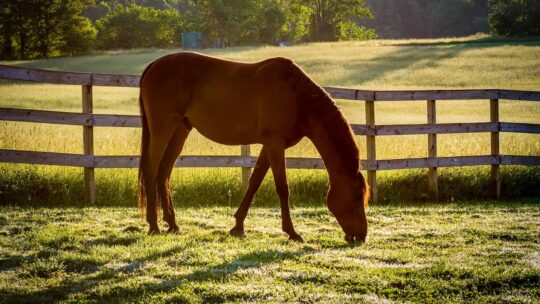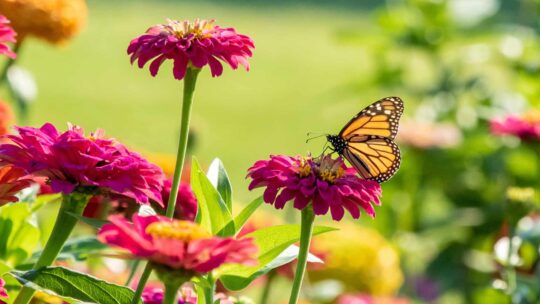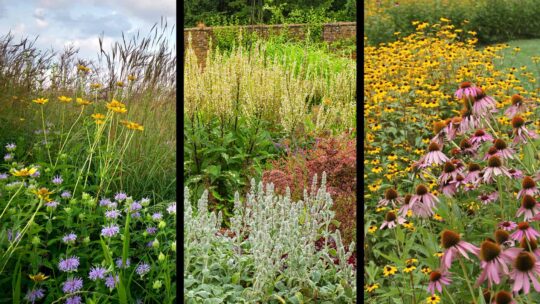Named for the humming noise made by their rapid wing movement, hummingbirds are a fascinating enhancement to your backyard, if you are lucky to encounter them. If you want to know how to attract hummingbirds to your backyard, you need to learn about their habitat needs.
Hummingbirds, with over 320 species, are native to North America. The Ruby Throated Hummingbird is the most common species breeding in the eastern United States, while the Black Chinned is the most common in the southern states, and the Rufous and Anna’s hummingbirds are most common on the Pacific Coast.

Hummingbirds expend significant energy due to their rapid flight habits, requiring them to eat about half of their body weight every day! Migratory hummingbirds winter in Mexico and South America and fly north to breed in North America in warmer months. In this time, hummingbirds typically gain 25-40% of their body weight to support the long migration southward—up to 23 miles per day.Attracting hummingbirds can be as simple as providing their favorite food: sweet nectar. Follow these tips to attract and support hummingbirds in your backyard.
Understanding Hummingbirds’ Flight Patterns
Familiarize yourself with hummingbird flight patterns to estimate their arrival and departure dates. Hummingbirds are also known to over-winter on the Gulf and Pacific Coasts, providing potential for year-round hummingbird action. They begin to migrate northward in early spring and return south in late summer/early fall. Hang your feeders in anticipation of their arrival, and keep your feeder up for two weeks following last hummingbird sighting to feed any late migrators.
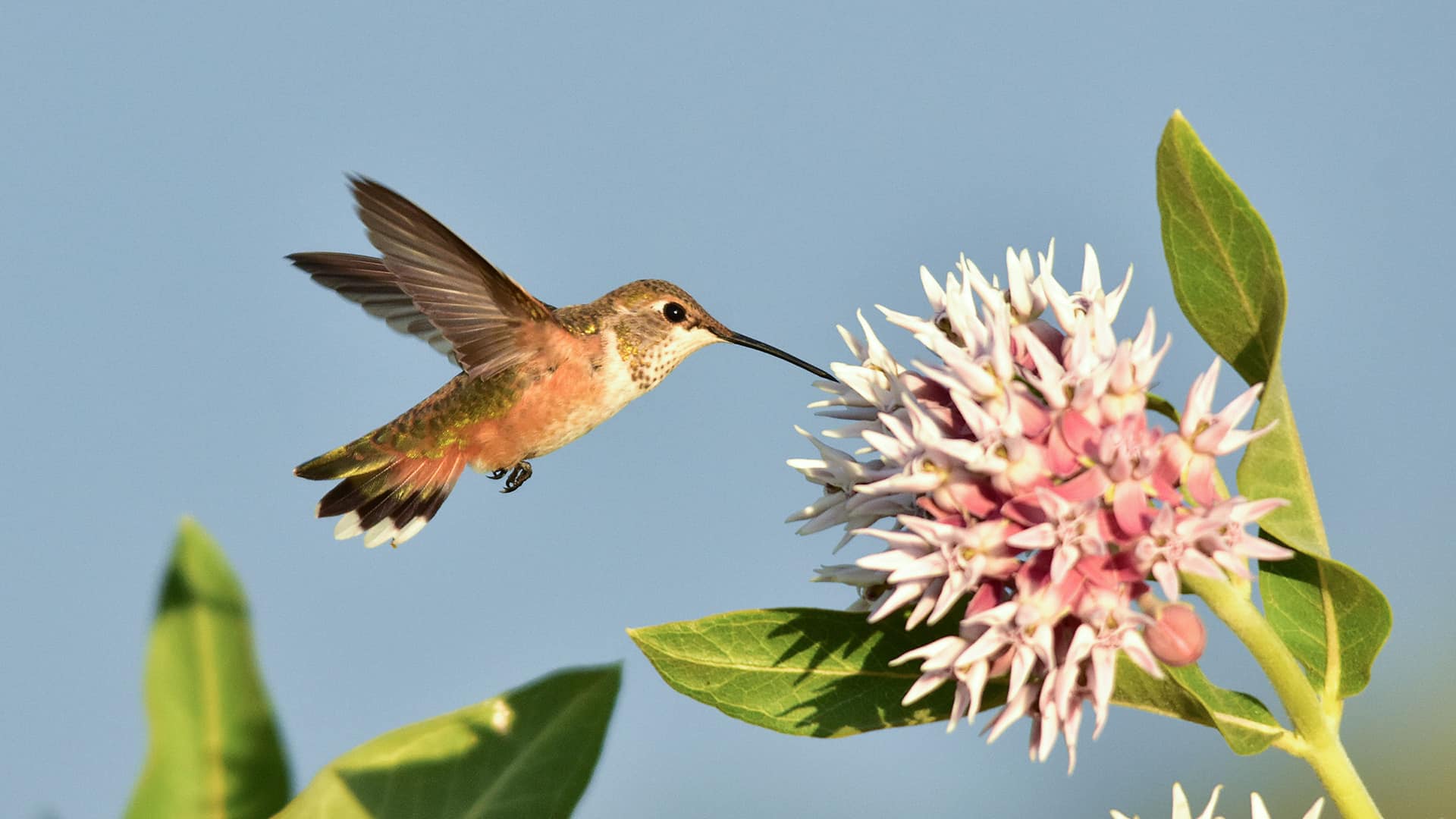
Creating a Hummingbird Habitat
Like other birds, hummingbirds require food, water and shelter. Their food preference is unique to their species and specific to their long cylindrical beak, through which they feed on their favorite food: sweet nectars. Hummingbird diets consist of nectar, sap and insects, such as aphids or spiders.
They are attracted to brightly colored native plants, specifically those with the color red, and can feed on over 1000 flowers every day. When encouraging hummingbirds through native vegetation, choose bright red blooms with a tubular shape. Providing foliage near the feeders will allow hummingbirds to thrive in your backyard, as they nest and find shelter in dense vegetation.
When planting your garden to attract hummingbirds, consider brightly colored flowering species. (These include: Lantana, Zinnias, Salvia, Beebalm, Milkweed, Cardinal Flower, Nasturtiums, Coreopsis, Columbine, and others native to your region.) Visit your local garden center or native plant nursery for recommendations.
For a water source, hummingbirds appreciate shallow bird baths, but prefer running water—like a fountain or misting hose. If providing an artificial nectar feeder, choose a red feeder and avoid red dyes. Feed hummingbirds a plain, clear sugar water, made from one part sugar to four parts water. Additionally, you can provide an insect feeder for a source of protein. Clean out the feeders regularly to prevent disease or contamination.
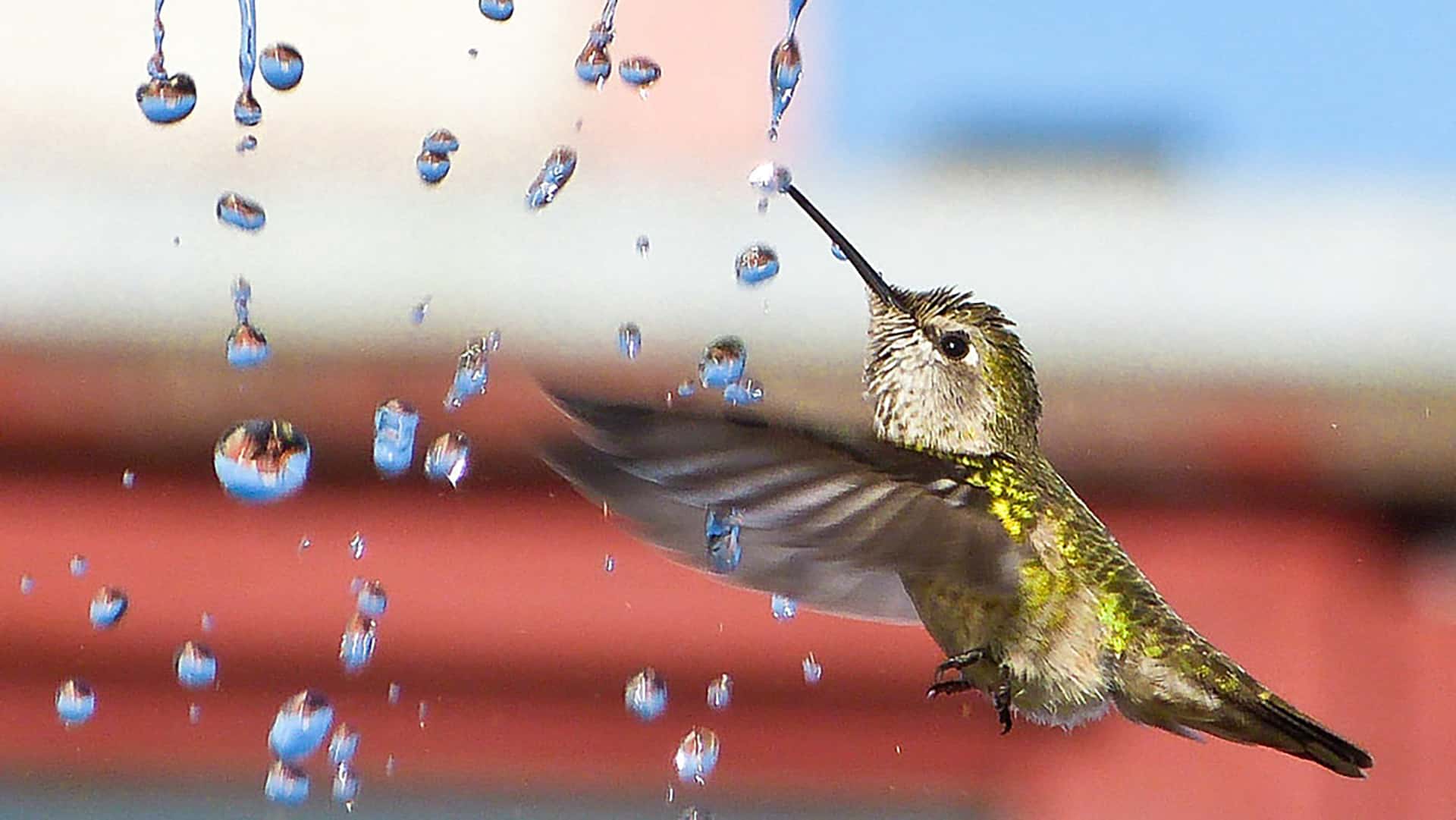
Minimize pesticide use in your backyard when possible to support hummingbirds and the insects which comprise a protein source in their diet.
For more information, visit: https://www.audubon.org/content/how-create-hummingbird-friendly-yard

